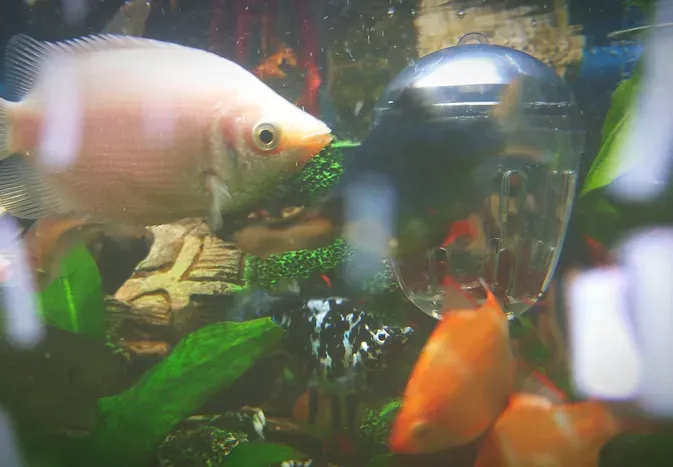Ammonia Poisoning in Aquarium Fish
Updated on 04/26/24

Ammonia Poisoning in Aquarium Fish: A Comprehensive Guide
Introduction
Ammonia poisoning is a common and potentially fatal condition in aquarium fish. It occurs when the levels of ammonia in the water exceed what the fish can tolerate. Ammonia is a toxic waste product that is produced by fish through their gills, urine, and feces. In a healthy aquarium, ammonia is converted into less toxic compounds by beneficial bacteria. However, when the levels of ammonia become too high, fish can become sick and even die.
Symptoms of Ammonia Poisoning
The symptoms of ammonia poisoning in aquarium fish can vary depending on the severity of the condition. Some of the most common symptoms include:
* Lethargy
* Loss of appetite
* Gasping at the surface of the water
* Red or inflamed gills
* Cloudy eyes
* Skin irritation
* Fin rot
* Tail rot
* Death
Causes of Ammonia Poisoning
There are several factors that can contribute to ammonia poisoning in aquarium fish. Some of the most common causes include:
* Overcrowding: When there are too many fish in an aquarium, the amount of ammonia produced can overwhelm the beneficial bacteria that are responsible for converting it into less toxic compounds.
* Overfeeding: Feeding fish too much can lead to an increase in the amount of ammonia produced.
* Poor water quality: Dirty water can contain high levels of ammonia. This can be caused by infrequent water changes, a lack of filtration, or a buildup of organic matter.
* Medications: Some medications can kill beneficial bacteria, which can lead to an increase in ammonia levels.
* New aquarium syndrome: When a new aquarium is set up, the beneficial bacteria that are responsible for converting ammonia into less toxic compounds have not yet had time to establish themselves. This can lead to a spike in ammonia levels.
Treatment for Ammonia Poisoning
The treatment for ammonia poisoning in aquarium fish depends on the severity of the condition. In mild cases, simply performing a water change and adding beneficial bacteria can be enough to resolve the problem. However, in more severe cases, medication may be necessary. If you suspect that your fish are suffering from ammonia poisoning, it is important to seek veterinary care immediately.
Prevention of Ammonia Poisoning
There are several things you can do to prevent ammonia poisoning in aquarium fish. These include:
* Do not overcrowd your aquarium.
* Do not overfeed your fish.
* Perform regular water changes.
* Use a filter to keep the water clean.
* Avoid using medications that can kill beneficial bacteria.
* When setting up a new aquarium, allow the beneficial bacteria to establish themselves before adding fish.
Examples of Ammonia Poisoning in Aquarium Fish
The following are a few examples of ammonia poisoning in aquarium fish:
* A betta fish that is kept in a small, unfiltered bowl may develop ammonia poisoning due to the buildup of waste products in the water.
* A group of neon tetras that are fed too much may develop ammonia poisoning due to the increase in the amount of ammonia produced.
* A new aquarium that is set up with too many fish may experience a spike in ammonia levels due to the lack of established beneficial bacteria.
Conclusion
Ammonia poisoning is a serious condition that can be fatal to aquarium fish. However, it can be prevented and treated with proper care. By following the tips in this article, you can help keep your fish healthy and happy.
Explore More Pets

Freshwater Aquarium Filters
How to Deal With Cloudy Aquarium Water

Saltwater Aquarium Filters
How Do You Remove Chloramines From Tap Water?

Freshwater Aquariums & Habitat
Can I Keep My Koi Fish Inside?

Saltwater Aquariums & Habitat
14 Best Floating Plants for Your Aquarium

Freshwater Fish Health
How to Treat Ich on Freshwater Fish

Saltwater Fish Health
Fin Rot in Aquarium Fish

Freshwater Aquarium Filters
How to Do Aquarium Water Changes

Saltwater Fish Health
How Do Fish Get Parasites?